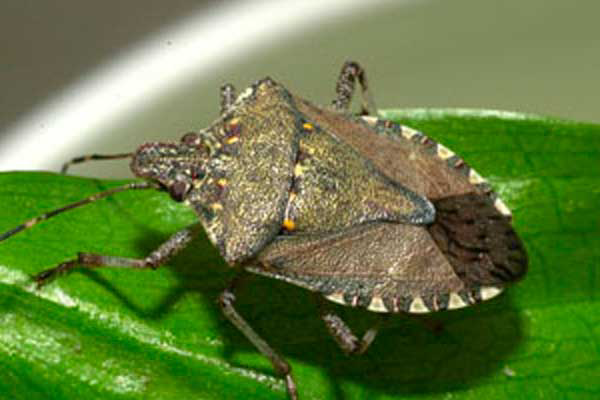Stink bugs a pest for corn as well as soybeans

Research by entomologists at Ohio State University have found that the stink bug can cause harm to not only soybeans but also sweet and field corn.
Andy Michel, an Ohio State University Extension pest expert, said that although stink bugs have the potential to be a significant problem, many growers may be less aware that the insects can also cause injury in corn.
While there have been a few reports in the Buckeye state of stink bug injury in some northern Ohio corn fields, growers who have found damage to corn that includes discolored, shrunken and or missing kernels, may find that stink bugs are indeed the culprit, said Michel, who also has an appointment with the Ohio Agricultural Research and Development Center.
OSU Extension and OARDC are the statewide outreach and research arms, respectively, of the college.
Stink bugs, known for their “sweaty feet” smell when squashed or irritated, have made their way into Ohio soybean fields and now some Ohio corn fields, in addition to invading homes statewide, he said.
“The damage isn’t really extensive but growers may see some damage on some kernels,” Michel said. “Usually the damage in field corn is localized to scarring on kernels or causing a mottled appearance near the tip of the ear, but severe injury has also been observed.
“Sweet corn is particularly susceptible to stink bugs and exhibits similar damage characteristics.”
Michel said damage reports have come in on some corn fields in Wood County and at Ohio State’s Waterman Farm in Columbus. The damage to corn crops is mainly caused by green stink bugs, which are native to Ohio, he said. But some of the damage to corn was also caused by the brown marmorated stink bug, which is a fairly new pest to the region.
A native of eastern Asia, the brown marmorated stink bug was first identified in the U.S. in Allentown, Pa., in 2001, said Ron Hammond, an OSU Extension entomologist. The brown, three-quarter-inch-long insects are known to feed on a wide range of crops, including apples, peaches, tomatoes and soybeans.
Likewise, he said, sightings of larger-than-usual numbers of green stink bugs have also been reported in Ohio soybean fields, as well as reports of the red-shouldered stink bug, which is a newer pest in Ohio.
“Up until recently, stink bugs weren’t in populations large enough to cause a concern in Ohio,” Hammond said. “But as these bugs begin to increase in numbers across the state, the concern for soybean growers is the potential for yield declines due to the pests, which use their piercing-sucking mouthparts to feed on the plant seeds.”
In corn, stink bugs appeared to be feeding through the husks, Michel said.
“When stink bugs pierce through the husk and feed on the ear during early development, the cob will not develop on that side, but continue growing on the back side giving the ear a characteristic banana-shaped appearance,” he said. “The shuck will also stop developing, exposing the grain to bird and insect damage, with signs of injury also including shrunken or missing kernels.”
Corn growers are encouraged to report any stink bug injury to OSU Extension so that entomologists can gauge how significant the problem may become for Ohio growers, Michel said.
“While we have not seen any economic losses from stink bugs in field corn, growers should be aware of their presence and the damage they can cause,” he said. “Heavy stink bug populations can reduce not only yields but also the quality of the grain, so we want to know if growers are seeing a lot of damage.
“We typically see more stink bug damage to corn crops in southern states, but we are interested to get an idea of what Ohio corn growers are seeing and experiencing in their fields. From a grower’s point of view, they might be confused as to what stink bug injury symptoms are, but the issue could be on the rise and it’s a problem that we want to make sure that growers are aware of so we can recommend treatment options.”
Source: OSU Extension
Join 26,000+ subscribers
Subscribe to our newsletter to stay updated about all the need-to-know content in the feed sector, three times a week. Beheer
Beheer









 WP Admin
WP Admin  Bewerk bericht
Bewerk bericht